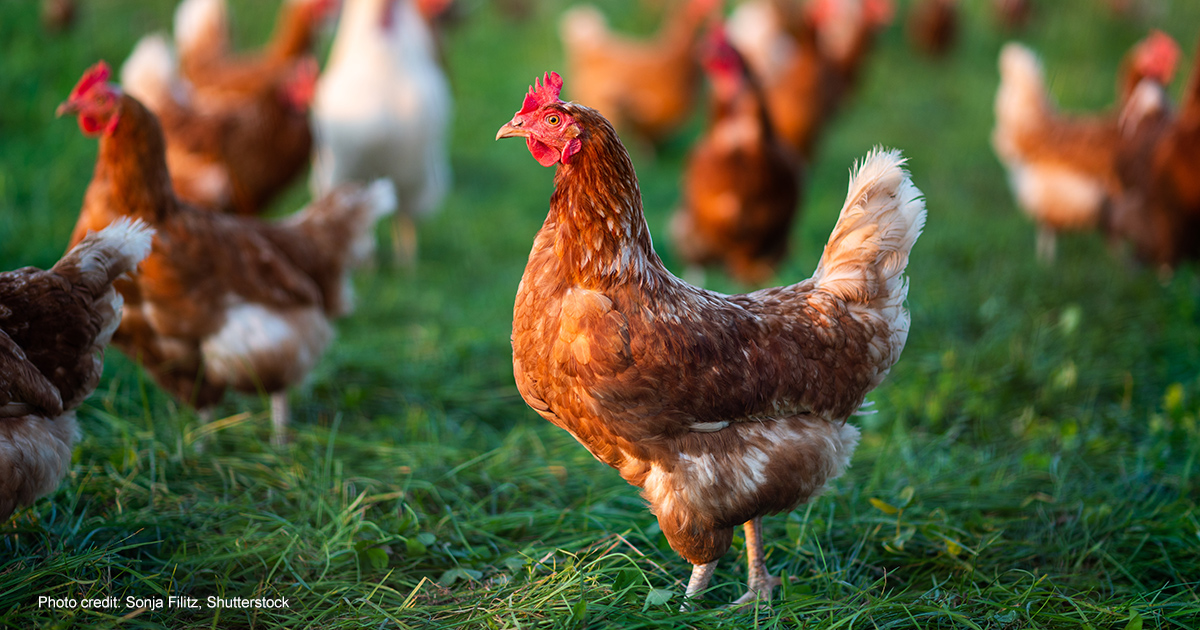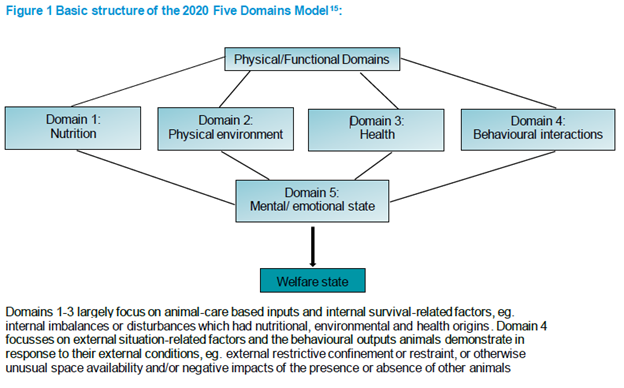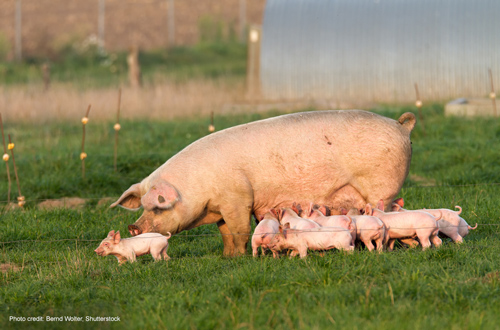
Nov 19, 2023 New Thinking and Policies on Animal Welfare
In 1964, Animal Machines by Ruth Harrison was published in the UK. The book described how farmed animals were kept closely confined in new industrial animal farming systems (commonly described as “factory farming”). The book launched an uproar in British society, prompting the government to establish a committee of inquiry, chaired by Professor Roger Brambell, into evolving animal farming systems. The report of this committee, now commonly known as the Brambell Report, appeared in 1965 and is a foundation document in the history of farm animal welfare.
One of the best-known products of the Brambell Report was the development of a list of Five Freedoms, which, in 1979, became codified by the UK’s Farm Animal Welfare Council as follows:-
- Freedom from Hunger and Thirst: by ready access to fresh water and a diet to maintain full health and vigor;
- Freedom from Discomfort: by providing an appropriate environment, including shelter and a comfortable resting area;
- Freedom from Pain, Injury, or Disease: by prevention or rapid diagnosis and treatment;
- Freedom to Express Normal Behavior: by providing sufficient space, proper facilities, and company of the animal’s own kind; and
- Freedom from Fear and Distress: by ensuring conditions and treatment which avoid mental suffering.
The Five Freedoms provided a basis for assessing an animal’s welfare and physical and mental state and have helped guide the development of care standards and housing protocols for billions of animals. However, modern industrial animal confinement systems rarely complied with the spirit or the letter of the Five Freedoms. In addition, the Five Freedoms focus on avoiding or alleviating conditions producing negative animal welfare for animals and do not address opportunities to promote positive animal welfare.

Credit: British Veterinary Association
Recently, the British Veterinary Association issued a new policy statement addressing animal welfare in which it is stated that “Enhancing, protecting and securing the health and welfare of animals is the fundamental purpose of the veterinary profession… and the veterinary profession plays a leading role in an interdisciplinary community seeking to promote the best interests of animals and improve their treatment, wherever they are used or impacted by people.” Such a strong positive statement about the veterinary profession’s responsibility for promoting animal welfare is unusual if not revolutionary for organized veterinary medicine!
 The new policy notes that the promotion of animal welfare has historically centered on identifying and minimizing negative effects on animals. However, new approaches now include an emphasis on maximizing positive states of animal welfare and ensuring animals have a “life worth living.” The new BVA policy has been influenced by the “Five Domains” approach described above and promoted by New Zealand veterinarian David Mellor and his colleagues at Massey University.
The new policy notes that the promotion of animal welfare has historically centered on identifying and minimizing negative effects on animals. However, new approaches now include an emphasis on maximizing positive states of animal welfare and ensuring animals have a “life worth living.” The new BVA policy has been influenced by the “Five Domains” approach described above and promoted by New Zealand veterinarian David Mellor and his colleagues at Massey University.
The new Five Domains approach incorporates the four physical domains of nutrition, physical environment, health, and behavioral interactions but also include an overarching domain addressing an animal’s mental and emotional state.
David Mellor has indicated that the five domains approach to animal welfare began its journey in the early 1990s during a 1993 ANZCCART conference on the impact of experimental procedures on the welfare of laboratory animals. The Five Domains model (not called that then) was developed to provide a more comprehensive assessment of animal welfare compromises that might be required during discussions in animal ethics committees reviewing the specific procedures used in animal laboratories. While many papers on the Five Domains approach to animal welfare have been published since 1993, the two that have generated the most interest appeared fairly recently in 2016 (Updating animal welfare thinking: moving beyond the Five Freedoms to ‘a life worth living.’) and 2020 (The 2020 Five Domains Model: Including Human-Animal Interactions in Assessments of Animal Welfare). Each paper has been downloaded over 60,000 times, and both are open-access.
The promotion of the Five Domains approach to animal welfare by the British Veterinary Association is a reflection of the increasing global interest in animal welfare in the 21st century and of growing concerns that humans must be more proactive in addressing animal welfare needs because the welfare of animals is intimately connected to the well-being of humans and the environment. The connections between the well-being of people, animals, and the environment are described in detail in the special Nexus Exhibit in the WellBeing International Studies Repository.


